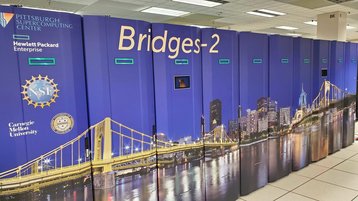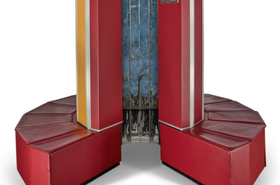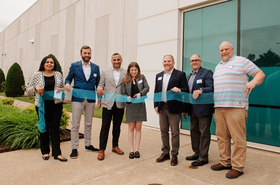Pittsburgh Supercomputing Center (PSC) has purchased new supercomputer, known as Anton 3.
The Idaho National Laboratory has also acquired a new supercomputer, dubbed Bitterroot.
Pittsburgh buys Anton 3
The new Pittsburg system was developed by D. E. Shaw Research (DESRES) and funded by a $3.15 million, five-year grant from the National Institutes of Health.
The 64-node system will replace the PSC’s current second-generation machine, Anton 2, and be used by scientists to simulate interactions between biomolecules and drug design. Under the terms of the grant, the supercomputer will be made available without cost for non-commercial use by US biomedical researchers, universities, and other not-for-profit institutions.
Unlike other supercomputers, which divide computation between application-specific integrated circuits (ASICs) and general-purpose host processors, Anton supercomputers run entirely on specialized ASICs.
“With the latest Anton system, we will be able to provide researchers with a unique resource capable of producing results in days that would take years on any other resource,” said Philip Blood, scientific director of the Anton project at PSC. “The new system will spark innovative studies that will challenge and shift current paradigms in the simulation of biomolecular systems.”
The system is due to be operational from Spring 2025 and eligible applicants have until October 14 to apply for an allocation.
Established in 1986, the PSC is a joint computational research center with Carnegie Mellon University and the University of Pittsburgh. The center hosts three supercomputers; Neocortex, Anton 2, and Bridges 2.
Idaho National Laboratory acquires new supercomputer
In July, the Idaho National Laboratory (INL) installed a supercomputer dubbed Bitterroot to improve the lab’s access to modeling and simulation tools for nuclear energy-related research projects.
The system will be made available through the Department of Energy’s Nuclear Science User Facilities (NSUF) program.
Bitterroot is a Dell-based CTS-2 system and offers more than 43,000 processing cores with 3 petaflops of performance. It is also the first system supported by NSUF to offer high-bandwidth memory.
In a statement, the INL said the system will allow researchers to better simulate next-generation nuclear technologies, such as advanced fuels and reactor designs.
“[The Center’s] high-performance computing is unique in that 80-90 percent of our computer cycles are dedicated to nuclear energy research,” said Matthew Anderson, manager of the high-performance computing group at Idaho National Laboratory. “Bitterroot brings us a new capability and additional capacity as we prepare for additional long-term investments in new computing resources.”
Idaho National Laboratory is home to three other supercomputers, the lab’s flagship 8.9 petaflops Sawtooth, and the Falcon and Lemhi systems. Bitterroot has been deployed to increase NSUF’s compute capacity as Sawtooth is currently unable to keep up with demand.







